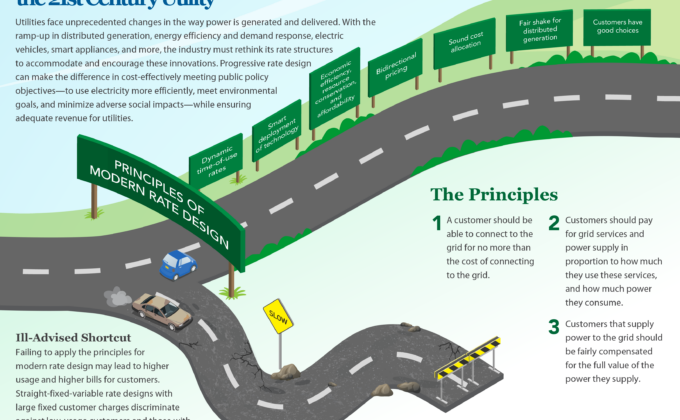
Knowledge Center
We believe that sharing our expertise and collaborations in clean energy policy is how real, effective change happens.
From reports and policy briefs, to webinars and podcasts—RAP advisors have built an extensive collection of resources providing in-depth analysis and practical solutions to today’s energy challenges.
Filter >>
Content Filter:
This short paper examines how electricity rates are designed in competitive markets. Wilson Gonzalez outlines and provides examples of wholesale generation auction processes and results, reviews capacity markets and the role of regional transmission organizations and independent system operators, and… View Summary +
Utilities face unprecedented changes in the way power is generated and delivered. With the ramp-up in distributed generation, energy efficiency and demand response, electric vehicles, smart appliances, and more, the industry must rethink its rate structures to accommodate and encourage… View Summary +
The electric utility industry is facing a number of radical changes, including customer-sited generation and advanced metering infrastructure, which will both demand and allow a more sophisticated method of designing the rates charged to customers. In this environment, traditional rate… View Summary +


